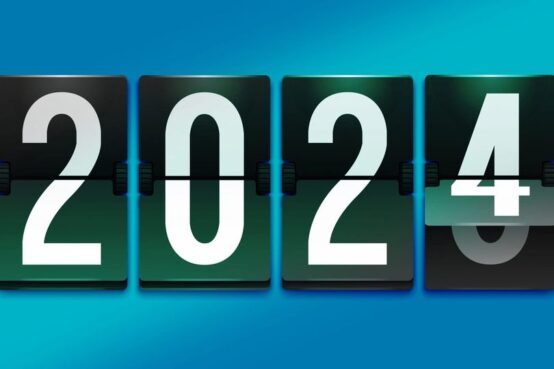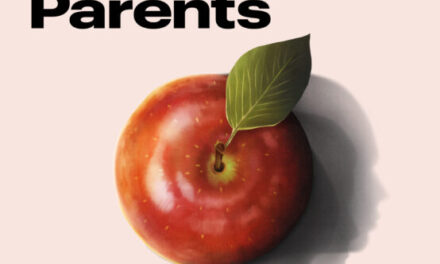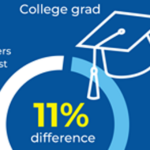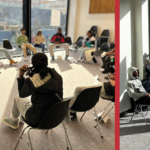An insider’s review of last year’s literacy coverage and recommendations for deepening the story in 2024: dosage, ed tech, and curriculum.
By Karen Vaites
It was a great year for literacy journalism, even though some of the year’s most important coverage didn’t necessarily get the attention or have the impact that it should have.
For more than a decade, I’ve been part of the movement to improve reading instruction in America, working with standards authors, curriculum developers, and advocacy groups. In the last five years, I have seen how journalism has changed the national conversation about literacy in America, fueling (and fueled by) grassroots teacher and parent movements to improve reading instruction.
I’m inspired by the Hanford Effect — and rooting for it to spread to fresh issues and additional journalists.
Here’s a look back on the best literacy pieces of the year, the pieces that should have generated more impact, and my ideas for how education reporters can deepen literacy coverage in 2024.
I have seen how journalism has changed the national conversation about literacy in America.
Most of the literacy pieces that made a big splash were based on the ideas illustrated in 2022’s “Sold a Story” and Emily Hanford’s prior work:
In February, New York Times columnist Nick Kristof contrasted our stagnant national reading outcomes with Mississippi’s literacy successes in a fiery, pointed fashion in the year’s strongest call to action.
In April, Science of Reading advocacy was on the front page of the Sunday Times care of Sarah Mervosh’s feature, which generally preached from the Hanford hymnal about U.S. literacy issues.
The New York Times effect is its own thing; suddenly that week, old friends were writing to ask about reading instruction. One week later, CNN’s Athena Jones covered the issue, with sources straight from Mervosh’s piece.
Both of these pieces reverberated more loudly than anything else on this list. The paper of record packs a punch.
New York City’s ambitious curriculum upgrade initiative also drew well-deserved attention. I was especially pleased to see two local reporters getting into the weeds and into classrooms:
Chalkbeat’s Alex Zimmerman broke the story about the majority of NYC schools selecting the weakest of the three curriculum options, an important story to watch.
The New York Times’ Troy Closson featured groundbreaking work in Baltimore and Detroit and compared New York to other states that have taken action — connecting some of the most important dots in the K-12 literacy landscape.
Caitlin Moscatello penned an exceptionally well-written intro to New York City’s reading initiative for New York Magazine, again expanding the conversation to new audiences.
Many districts continued to cling to discredited products, however, and their slowness to change also generated coverage:
In March, former The 74 reporter Asher Lehrer-Small’s important analysis showed that many districts were still pouring money into programs linked to three-cueing, helping to answer the question: Are school practices keeping up with the national reading conversation?
Mandy McLaren and Naomi Martin echoed this theme in a barn-burner series in the Boston Globe, spanning weak children’s reading outcomes and the popularity of flawed products. Come for the investigative journalism on the high market share of flawed programs, stay for the jaw-dropping statements from Heinemann reps.
Just last month, APM Reports’ Christopher Peak reported that the most popular reading assessment in America is no better than flipping a coin at gauging children’s reading skills. Peak built on insights from “Sold a Story,” but it felt fresh because it put assessment in the foreground and broadened beyond the narrow Lucy Calkins story.
In 2023, there were too many high-quality literacy stories and bylines to count, but two more deserve to be named: Rupen Fofaria’s EdNC story on successful case studies and Joe Hong’s dyslexia reporting for CalMatters, which was a key catalyst for California’s new screening legislation.
Other aspects of literacy did get their due over the past 12 months.
| Explicitly or otherwise, the widely shared pieces above all focused on the presence or absence of phonics.
This isn’t meant as a complaint; coverage of reading foundations is critically important. Still, we should all be aware that we’re in an era when one (of many) issues with reading instruction drives the discourse.
Other aspects of literacy did get their due over the past 12 months, and the next few pieces led the way:
Matt Barnum’s strong Chalkbeat feature on Science of Reading laws noted their weak support for the knowledge-building necessary to fuel reading comprehension, even as the research in favor of knowledge-rich curricula is stronger than ever.
Sarah Schwartz continues to be America’s most prolific literacy journalist, and all of her work deserves more eyeballs. But I was glad to see her reporting on the seismic Colorado study of knowledge-building curriculum all over my feed, as it was one of the most important studies of the year. (Another hat tip goes to Schwartz for strong coverage of one of 2023’s biggest literacy stories: the “dissolving” of Reading & Writing Workshop by Columbia’s Teachers College.)
Columnist Natalie Wexler’s viral column on “skills and strategies” instruction pushed the conversation about reading comprehension into important new territory via a spotlight on an under-covered study. Wexler confirmed that it was her most-read column of the year by a good margin, a welcome sign of interest in the nuances of reading comprehension instruction.
Now for the superb pieces you probably missed.
Now for the superb pieces you probably missed. These must-reads made fewer waves, despite their importance:
The AP’s Sharon Lurye put a powerful spotlight on the reading gains in three southern states in an article for AP News that declared a key trend: state-level leadership across the sun belt. Personally, it opened my eyes to promising aspects of Alabama’s work.
The EdWeek feature series on writing research — The Science of Reading … and Writing — was standing ovation-worthy. EdWeek’s team captured research highlights and classroom insights in a rich fashion.
Independent journalist Holly Korbey wrote a brilliant piece on ed tech’s impact on literacy for MIT Technology Review. She honored the potential of ed tech to aid reading instruction in certain cases, while conveying the broader concern about tech’s erosion of deep reading skills.
Matt Barnum wrote a superb piece on the nuances of third-grade retention legislation for Chalkbeat, as did the Wall Street Journal’s Sara Randazzo. That’s how I learned that states like Tennessee aren’t retaining at very high rates, even after passing new retention laws. All essential coverage.
The 74’s Linda Jacobson’s spotlight on parent tutors trained by The Oakland REACH, who drove reading gains that outpaced classroom instruction, deserved a lot more attention.
Carolyn Jones wrote a about meaningful gains in the 75 California schools with the lowest reading scores.
And Karen D’Souza penned an excellent EdSource overview of the non-phonics aspects of the Science of Reading might be the best explainer I’ve ever seen on this topic (which deserves more explainers).
|
|
I hope more journalists will overcome their apparent hesitations about the potential of high-quality curriculum.
I am grateful for all of the work journalists produced in 2023, and I hope for similar volume this year.
I also hope that we see some of the trending conversations in social media make their way into education journalism. The three hot topics I have in mind: dosage, the demons of ed tech in U.S. classrooms, and curriculum.
If you look closely, dosage is a hot topic in literacy discourse. We know that kids need daily, systematic phonics, but how much time should go towards it versus also-important knowledge-building and work with grade level texts? What about writing instruction? What’s the right dose of skills and strategies instruction?
These are very real questions, and prominent figures like Mark Seidenberg have been pushing them. Instructional time is limited and precious (and even under threat from four-day school weeks). How can schools fit in the numerous literacy essentials and navigate the necessary tradeoffs? Coverage here, please!
You also see a good deal of social media buzz about the ills of technology for schoolchildren. Jill Barshay has been doing heroic work sharing recent studies in superb Twitter threads, and Emily Hanford has been seen tweeting about the harms of digital reading on comprehension. I hope we see these insights in print.
After all, the hard questions about ed tech intersect heavily with the dosage questions. Lucy Calkins isn’t the only villain in the neglect of phonics instruction. One could argue that the rise of ed tech in schools has been a massive distraction from core reading and math essentials, and potentially the biggest culprit in districts’ general failure to change the way that reading was taught, especially as we reflect on the Common Core era. Can we get more journalists to connect these dots?
Lastly, I hope more journalists will overcome their apparent hesitations about the potential of high-quality curriculum. Some of the best coverage sent strong signals about the opportunity for better reading practice, but tepid signals about the potential of, and role of, great curriculum in empowering those practices.
For example, Emily Hanford’s “Sold a Story” bonus episodes and Matt Barnum’s otherwise-strong piece on knowledge-building had some real wet blanket vibes about the potential of stronger curriculum. If we all agree that flawed curriculum ushered bad practices into classrooms, wouldn’t it stand to follow that well-designed programs could introduce good practices? How can journalists support the field in finding the worthiest options (hint: most of the options from big publishers ain’t it) during this moment of change?
Most of all, I hope reporters keep getting into classrooms to show the texture of good versus mediocre (or worse) reading and writing lessons. At its heart, literacy improvement is a classroom story.
Karen Vaites is an English Language Arts curriculum expert and children’s advocate based in New York. You can find and follow her at @karenvaites.
Previous literacy commentary from The Grade
How to report on whether district reading programs are any good (Colleen Connolly)
Why reading went under the radar for so long – and what one reporter is aiming to do about it (Alexander Russo)
How do we get Black kids’ literacy to matter? Have more journalists cover it. (Colette Coleman)
Bringing energy and creativity to literacy coverage (Alan Borsuk)
Why reporting on literacy is so hard — and tips for making it easier (Mandy McLaren)
A new effort to promote high-quality literacy coverage (Emily Hanford)
A low grade for literacy coverage (Susan Neuman)
Don’t call it ‘the reading wars’ (Molly Ness)
Inadequate literacy coverage in New York City (Lee Gaul) |
|
ABOUT THE AUTHOR
Launched in 2015, The Grade is a journalist-run effort to encourage high-quality coverage of K-12 education issues.















